Camping in the snow guarantees spectacular scenery and a unique experience, given that you can survive such harsh weather in an RV. While heating using gas, electricity or propane can be big money pits in winter, the good news is seasoned RVers do have some great tips on how to heat an RV without electricity, gas or propane.
These methods are heating techniques that effectively trap the heat inside your RV and prevent icy cold air from leaking in. Even if you use conventional heating, these techniques can add considerable warmth to your journey while being affordable and saving you heaps of money in the long term.
Since your RV batteries drain very quickly in winter, plugging in at an RV park is the best option for winter RV living. However, if you love to travel off the beaten path and won’t have easy access to campground power outlet, knowing how to heat an RV without propane will be a matter of survival.
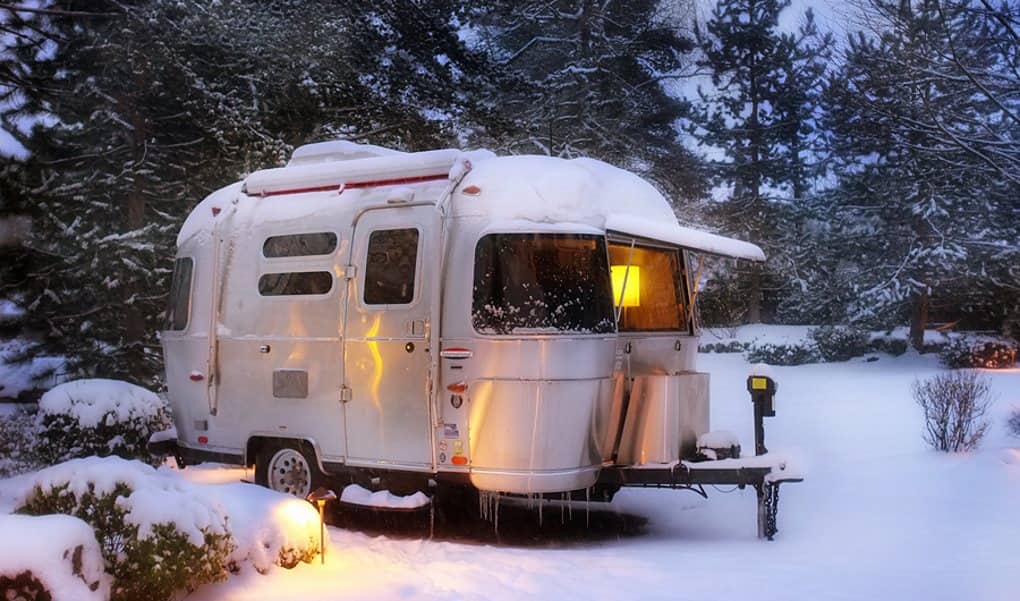
The following handy and affordable methods on how to heat an RV without electricity includes different insulation setups and green energy.
Contents
How to heat a camper without electricity: Simple and affordable methods
The key to keeping your RV warm in the harsh winter is effective insulation, that is preventing cold air outside from leaking in and trapping the heat inside the RV.
The two areas to focus most of your energy on if you want to improve insulation are windows and vents. Even tiny cracks will let cold air in and reduce the temperature to a noticeable extent.
1. Windows: Reflective insulation and air leaks sealing
Maximizing natural sunlight
You might think that trying to get exposure to sunlight when it’s snow and ice outside would not do much, but you would be wrong.
Simply position your RV so that the largest windows point to the south and west to maximize your RV’s exposure to direct sunlight definitely will warm you RV up. It is one useful tip on how to heat an RV that many new RVers do not know or underestimate.
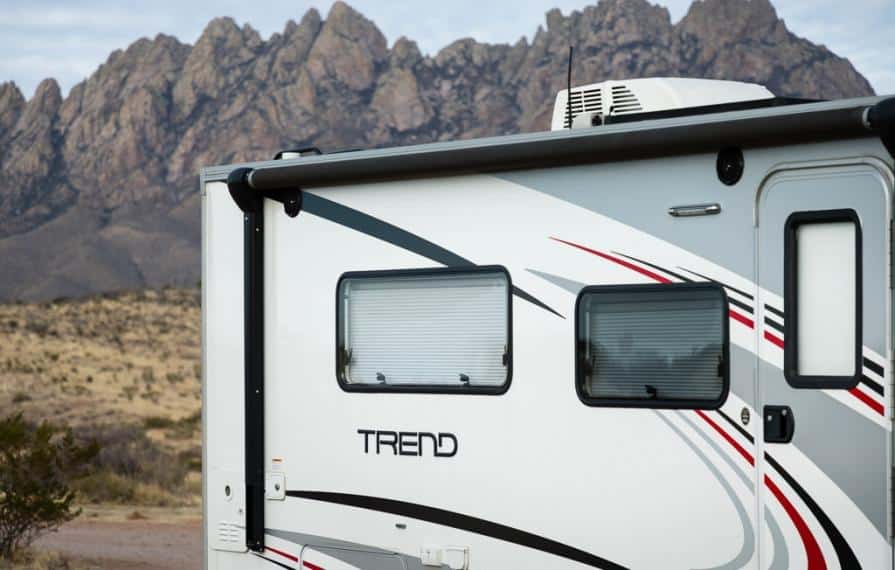
Fixing air leaks
Before trying to do anything to more effectively trapping warm air inside your RV, you must make sure cold air cannot leak in from all the nooks and crannies first.
Tiny air leaks from the rubber gaskets around your exterior windows, doors and vents are often overlooked, however keeping them in good shape will ensure cold air is not leaking into your interior.
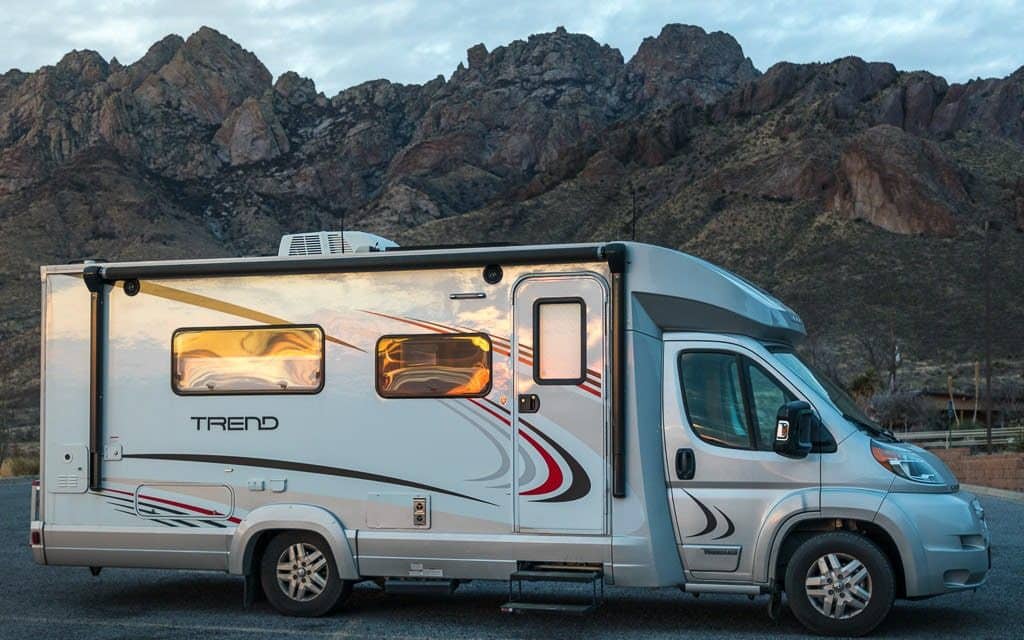
If they are worn, repair or replace them. Next, inspect the edges of cabinets, closets and appliances, which are surprising places where cold air can leak through. A maintenance tips for this type of leak is to use silicone sealer or spray foam insulation.
Reflective insulation
If you love to travel in the winter, Reflectix is something you must equip your RV with.
Relectix is a reflective insulation accessory consisting of an aluminum foil, which covers all your windows to rebound most of the heat that travels to them. Thus the existing heat will be trapped or condensed inside your RV while only a small amount will escape, thereby more effectively maintaining the ideal temperature.
Relectix is handy in both winter and summer. If you travel during summer or in areas with year-round hot weather, these reflective insulation rolls will reflect sunlight away from your RV, thus keeping your RV cooler.
These rolls typically cost around $15-$50 each, an economical and effective way for cheap and effective temperature control. Buy one from Amazon here.
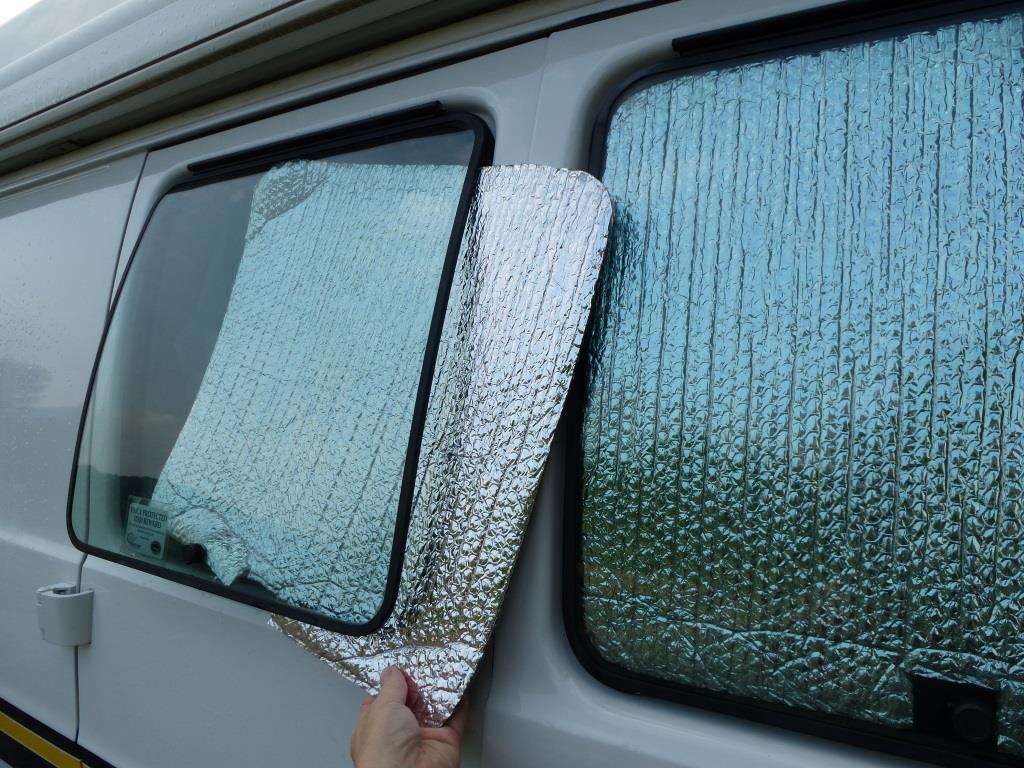
Simply attach these rolls to cover the whole area of each window. Also, if your RV comes with a shower skylight, don’t forget to insulate it too.
A pro tip on how to heat an RV using Reflectix is to look at the product’s R-value. This R-value tells you how well the insulation will trap heat inside a space.
While the higher the R-value number, the better, anything between R-3.7 and R-21 would be functional for your RV’s relatively small space.
2. Hatch vent insulator
An RV’s hatch vents, roof and wall vents are also often overlooked and can let cold air in, thus all of them need to be covered.
These vents covers are usually made from thin plastic, which is not reliable at all in preventing cold air from leaking in. Thus it is best to equip them with extra protection by adding another layer of Styrofoam right below the covers.
The Styrofoam must be cut to fit precisely. Secure it in place with tape or another adhesive.
The second option is to get a vent insulator. A popular choice for RVers is vent insulators from Camco, which typically sell for around $15 on Amazon. A vent insulator is a large piece of insulated foam that may or may not come with a reflective surface.
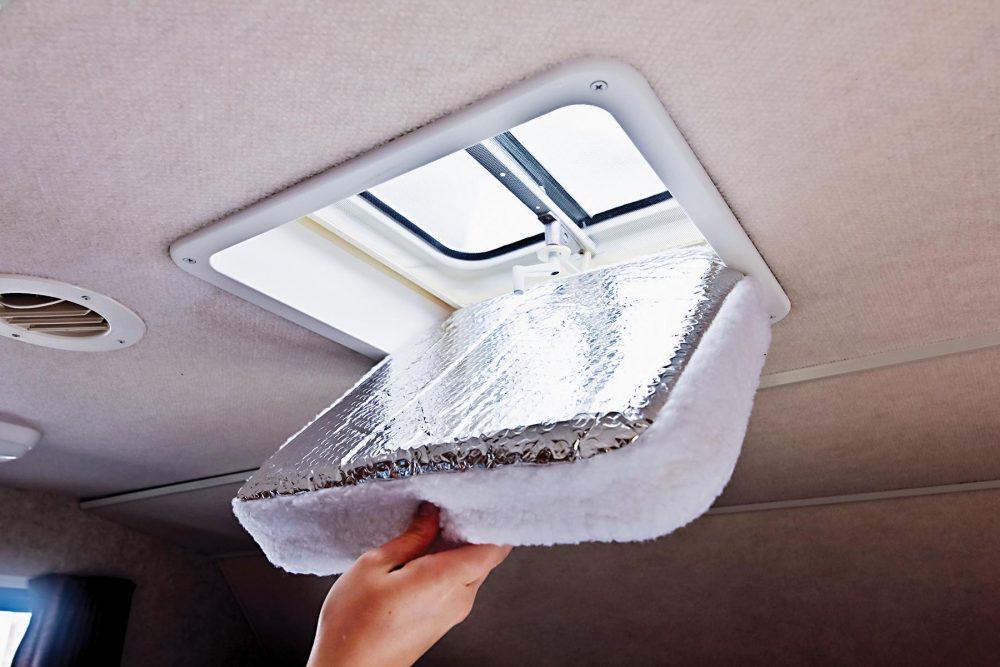
Do note that you must get a vent insulator that will fit your vents.
Aside from being a cheap and useful method for how to heat an RV passively, Styrofoam and vent insulators are also handy in the summer: it traps in cold air from your air conditioner.
Affordable and useful in any weather, these accessories are a must-have for your RV for better temperature control.
3. Screen door: Shrink plastic
If your RV has a screen door, there is a way to cold-air proof your screen door so that you can enjoy natural light without letting the cold air in. This method will take you less than an hour to set up and you can simply remove it in mere minutes when summer comes.
Do not underestimate this simple method. Adhering a layer of Shrink Plastic or even just the heavy-duty plastic wrap from your own kitchen to the whole area of your screen door will effectively make it similar to a glass door.
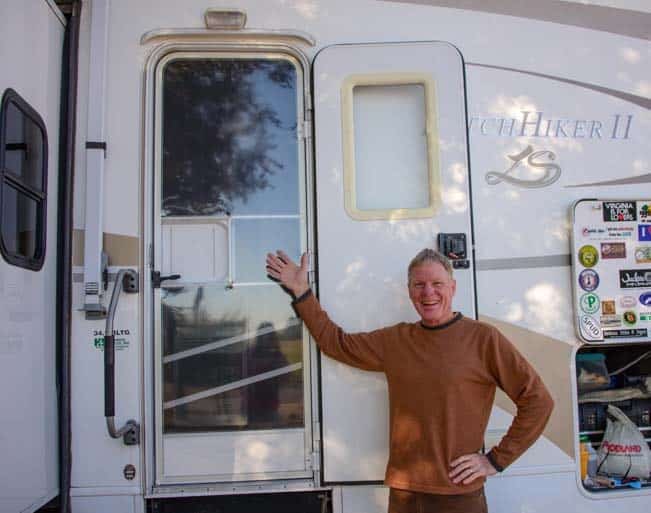
What you will need:
- A pair of scissors
- Razor blade
- Hair dryer
- Shrink Plastic kits or
- Alcohol or cleaning solution and cleaning cloth: for wiping the door surface to allow the plastic to stick better.
If you want a hassle-free application, getting a Shrink Plastic kit would be most convenient. The kits usually come with double sided tapes.
First, wipe the screen door clean with alcohol or a cleaning solution. Let it dry, then stretch the tapes along the door edges and remove the backing.
Next, press in the plastics onto the tapes with heavy pressure for a few minutes so the plastic will stick. After you have covered the whole screen door like this, use the blade to trim off any excess. There will be air pockets and wrinkles, but you can solve this very fast with the next step.
To deal with air pockets and wrinkles, use the hair dryer to heat along the edges first, then continue on into the middle section of the door. Do not focus at one spot for too long but move the hair dryer around to avoid melting the plastic. The layer of plastic should shrink down and stick well to your screen door without any ugly air pockets and wrinkles.
Cool RV hack, yes? Now you can enjoy natural light and scenery outside without letting the biting cold air in your toasty RV.
4. Solar Heating
In extreme winter, you would definitely need gas, electrical or propane heaters in addition to the passive heating techniques above. However, in milder winter, solar heating plus passive heating may be sufficient to replace conventional heating methods.
If you plan to be an RVer for life, this green energy source will save you money in the long term, all the while being environmentally friendly. Solar panels work by generating photons while sitting in the sun for hours. The photons can be converted to be used as electricity for your RV.
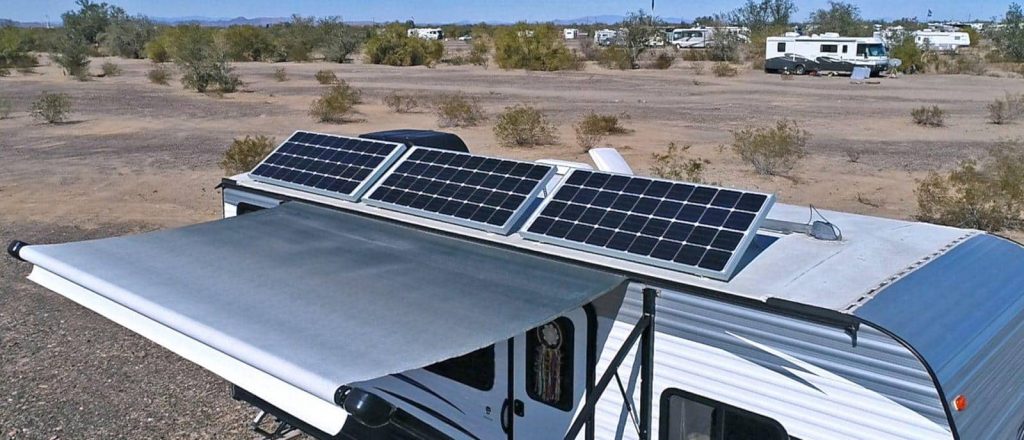
You can now buy RV solar panels from many sources. A panel typically costs between $500 and $300, depending on the durability, efficiency and size of the panel. The bigger the panel, the more green energy it can produce to heat your RV without electricity.
This sustainable and economical option is welcomed by countless RVers, thus you can check on our guide here on how to choose a good solar panel and how to install these panels on your RV’s roof.
5. DIY Heat Grabber
Another fun and innovative choice for heating an RV without electricity, propane and gas is to assemble your own window Heat Grabber box, an invention introduced by Mother Earth News. This small project will only cost you about $35, but will save you much much more in the long term.
It should be noted that the space that will be warmest will be where the Heat Grabber is located. Also, this method only works if you travel in a place with a lot of direct sunlight and when your RV is parked.
You can look up instructional videos on how to assemble a Heat Grabber. To assemble your own Heat Grabber box, you will need:
- Celeotex Thermax TF-160 insulation board. It’s built with aluminum foil and glass fibers and is highly recommended for this particular project.
- Black paint
- All-metal aluminum foil duct tape
- Three pieces of single strength glass
- 16 scrounged No. 8 finishing nails
- Panel adhesive
How to heat an RV with a Heat Grabber? As a “weathertight box that’s insulated on the bottom and sides and topped with glass,” it has a lipped insulated divider. The Heat Grabber can go over a windowsill and gather sunlight. The recommended angle for placement is 45 degrees.
The glass portions of the Heat Grabber welcome sunlight in easily. Sunlight heats the aluminum foil and the black divider, which you painted. When the aluminum foil is adequately hot, it will heat up the air around the Heat Grabber.
This hot air will spread inside your camper, depending on the amount of sunlight you get and the number of Heat Grabber that you can place on your windows.
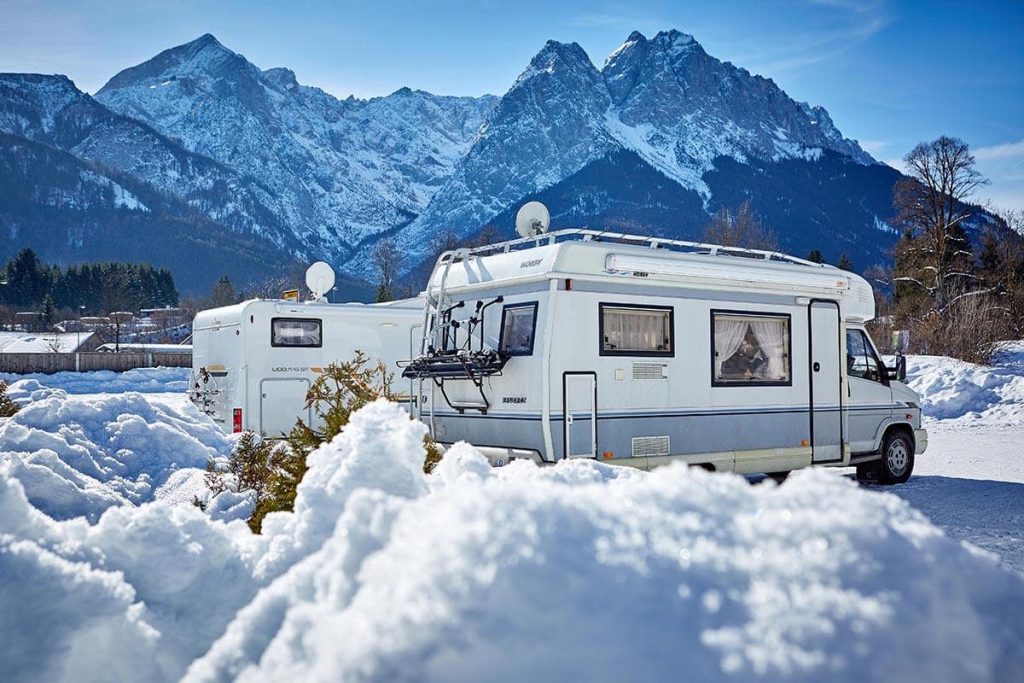
While these methods on how to heat an RV without electricity are passive heating techniques, do not underestimate how effective they are. In the long term, whether you do use electricity, gas or propane for heating or not, these environmentally friendly methods will better keep your RV toasty on long winter camping trips out in the snow while saving you money.

Hello
I’m new at RV traveling bought a 2001 Fleetwood jamboree off my Family. They replaced the roof due to leaking and there are some water spots on the ceiling inside.
My question is the RV has headliner material and we want to install the styrofoam ceiling tiles. Do I need to remove the headliner (I did spray with KILL) or can I glue on the fabric for new fresh look.